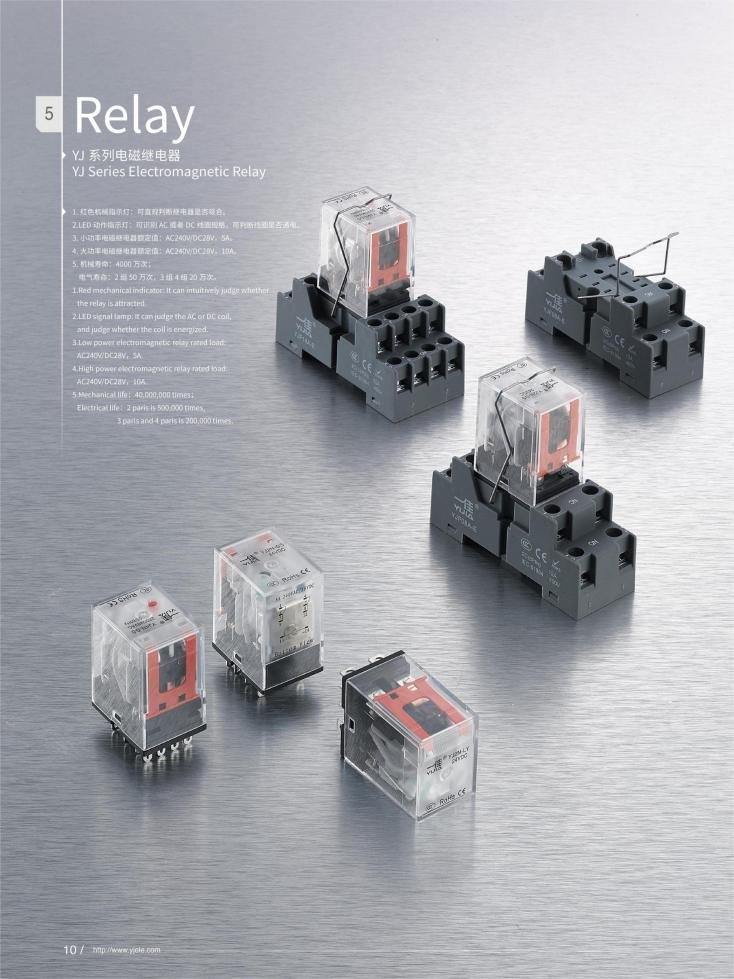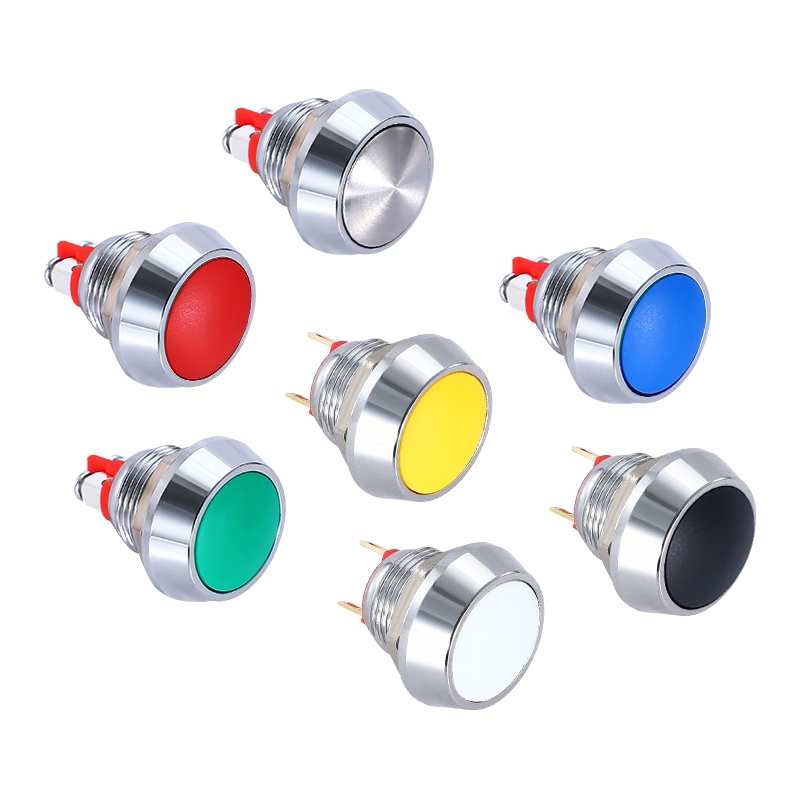Getting Started Guide to Relay Switch Boards
What is a relay switch board
A relay switch board is an electronic device that contains multiple relay components used to control one or more electrical loads in an electrical circuit. This device activates a relay by receiving an external control signal, thereby opening or closing the path for current to flow to a specific load. Relay switch boards are widely used in automation control systems, especially where multiple circuits need to be controlled remotely or automatically.
The core function of the relay switch board is to achieve electrical isolation and amplify control signals. By using relays, the control system can drive larger currents and voltages with smaller currents and voltages, thereby controlling larger power devices while protecting the control system from damage by high voltages and currents. The relay itself usually consists of an electromagnetic coil and a set of contacts. When the coil receives an activation signal, it will attract the contacts to close, thus completing the closing or opening of the circuit.
Advantages and Disadvantages of Relay Switch Board
Relay switch boards have the following advantages and disadvantages:
Advantage:
- Electrical Isolation: Relays provide excellent isolation between control signals and loads, protecting control systems from high voltages and currents.
- Wide applicability: Can control various electrical loads from tiny signal circuits to high-power equipment.
- Simple and reliable: The relay technology is mature, the design is simple, the failure rate is low, and it is easy to maintain and replace.
- Cost Effectiveness: Relative to other types of switching devices such as solid state relays or transistor switches, relays are less expensive and are particularly cost effective when handling high power loads.
Shortcoming:
- Response Time: Relays have a slower response time because it takes time for the physical contacts to move, which may not be optimal in applications that require fast switching.
- Physical Wear: Relay contacts wear out from repeated switching, which limits their service life, especially in environments with high-frequency switching operations.
- Noise: Relays generate noise when operating, caused by the physical engagement and separation of contacts, and may not be suitable for applications requiring a quiet environment.
- Size: Relays are typically larger than solid-state switching devices, which can be an issue in space-constrained applications.
Types of relay switch boards
Relay switch boards can be classified according to different standards and functions. Here are some common types:
Classification by relay type:
- Electromagnetic Relay Switch Board: Using electromagnetic relays, suitable for a variety of general control applications. They rely on electromagnetic force to move contacts and switch circuits.
- Solid State Relay (SSR) Switch Board: Contains no moving parts and uses semiconductors to switch circuits, providing faster response times and longer life, but at a higher cost.
- Thermal relay switch board: Mainly used for overload protection, which can sense excessive current and cut off the circuit to prevent damage to electrical equipment.
Classified by control function:
- Manual control relay board: Control the activation and closing of the relay through a manual switch.
- Automatic control relay board: It can accept signals from sensors or control systems and automatically control the status of the relay. It is widely used in automation and remote control systems.
Classified by installation and usage environment:
- Indoor Relay Switch Board: Designed for use in indoor environments, usually with a lower protection rating.
- Outdoor relay switch board: Designed for use outdoors or in harsh environments, with a higher protection level and can be waterproof and dustproof.
Classification by circuit complexity:
- Single Relay Switch Board: Has only one relay and is used to control a single circuit.
- Multi-channel relay switch board: Contains multiple relays, which can control multiple circuits at the same time. It is suitable for applications that need to control multiple devices or loads at the same time.
Components of relay switch board
Relay switch boards are typically constructed from multiple key components that work together to achieve effective circuit control and load management. Here are some of the main components:
- Relay: The relay is the core component in the switch board and is responsible for the actual switching operation. It usually consists of an electromagnetic coil, a set of contacts (normally closed contacts and normally open contacts) and a spring. When the coil is energized, a magnetic force is generated to attract the arm to move, changing the contact state, thereby controlling the switch of the circuit.
- Control unit: The control unit receives external control signals (such as signals from automatic control systems, sensors or manual switches) and activates or deactivates relays based on these signals. The control unit may include a microprocessor and associated electronic circuitry to process input signals and drive relays.
- Power Module: The power module provides the necessary power to the relays and other electronic components on the relay board. It usually includes transformers, rectifiers and voltage regulators to ensure stable and safe voltage and current.
- Interface Module: The interface module includes various terminals and connectors used to connect the relay switch board to external devices such as loads, control systems, or other electrical equipment. These interfaces ensure proper transfer of signals and power.
- Protective Devices: Protective devices are used to prevent electrical faults or abnormal conditions from damaging the relay board or connected equipment. These may include fuses, overload protectors, voltage protectors, etc.
- Indicator lights and display devices: Indicator lights (such as LED lights) and display devices are used to display the status of the relay (activated or inactive) and fault indication, helping users monitor the operating status of the relay switch board.
- Enclosure and Mounting Components: The enclosure protects internal components from physical damage and environmental effects such as dust, moisture, etc. Mounting components such as screws and brackets help secure the relay board in a specific location.
Application scope
Relay switch boards are widely used in many fields due to their flexibility and reliability. Here are some of the main application areas:
- Industrial Automation: Relay switch boards are very common in manufacturing and production lines to control equipment such as machines, motors, pumps, and fans. They help achieve automated control, improve production efficiency and safety.
- Building Automation: In smart building management systems, relay switch boards are used to control lighting, air conditioning systems, security systems and other building management functions to achieve energy savings and optimize building operations.
- Automotive industry: Relay switch boards are widely used in automotive electronic systems to control lights, starters, fans, electric windows, etc. They are an indispensable part of modern automotive electronics.
- Communication equipment: In communication infrastructure, relay switch boards are used to control the routing and processing of signals to ensure the reliable operation of the communication network.
- Household appliances: Relay switch boards are used in household appliances such as washing machines, air conditioners, refrigerators, etc. to control motors and other key components to achieve complex operations and functions.
- Energy management: In solar power plants and other renewable energy facilities, relay switch boards are used to control and manage energy flow, optimizing energy production and distribution.
- Medical equipment: The application of relay switch boards is also common in medical equipment, such as controlling various mechanical and electrical functions in diagnostic equipment and treatment equipment to ensure the accuracy and reliability of the equipment.
- Security Systems: Relay switch boards play a key role in security and surveillance systems and are used to control access control systems, surveillance cameras, and alarm systems.
These applications demonstrate the versatility and importance of relay switch boards in modern technology and equipment. With proper design and use, relay switch boards can provide effective, reliable solutions to a wide range of industrial and consumer needs.
Installation steps and troubleshooting
Installation steps
Installing a relay switch board typically involves following these steps:
Preparation:
- Make sure to disconnect all power sources to avoid electric shock or short circuit during installation.
- Check that all tools and materials are present, including relay switch boards, screwdrivers, wiring tools, etc.
Determine the installation location:
- Select a suitable location for mounting the relay switch board, ensuring that the location is both accessible and meets all relevant safety regulations.
Installation and fixation:
- Use screws or brackets to secure the relay switch plate in the selected location. Make sure the board is stable and avoid vibration or movement.
wiring:
- Make the wiring according to the wiring diagram of the relay switch board. Connect input and output lines, including control lines and power lines.
- Make sure all connections are tight and secure and use appropriate terminal blocks.
Testing and Debugging:
- Before connecting the power supply, double-check that all wiring is correct.
- Apply power and perform a functional test to verify that all relays operate as expected.
final check:
- Make sure all wires are properly secured and protected and that safety covers or panels are securely installed.
Troubleshooting
Some common problems you may encounter when using relay switch boards and their solutions:
Relay not working:
- Check that the power is on and make sure the supply voltage and current are within specifications.
- Check whether the control signal reaches the activation threshold of the relay.
- Check whether the relay and its contacts are defective due to dust or wear and replace the relay if necessary.
Relay switches frequently:
- Check whether the control signal is stable and avoid frequent switching due to signal jitter.
- Check whether there are voltage fluctuations or load abnormalities, adjust system configuration or perform circuit protection.
Short circuit or overload:
- Immediately disconnect the power supply and check the wiring for damage or short circuits caused by improper connections.
- Check whether the protection device (such as fuse or overload protector) on the relay board is working. If it is damaged, replace it in time.
Excessive noise:
- For electromagnetic relays, check for loose contacts and coils and make sure all parts are tight.
- Consider replacing electromagnetic relays with solid-state relays that are more suitable for quiet environments.


